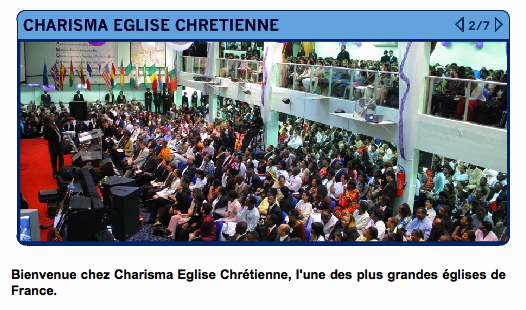
In his research, Fath found only four congregations in France that could be termed megachurches, which by definition have at least 2,000 people in attendance. However, many more French congregations are approaching that size or borrowing practices and teachings from megachurches.
In a paper delivered at the August meeting of the Association for the Sociology of Religion in Atlanta in the U.S., Fath said that these megachurches are all charismatic or Pentecostal and three of them are in the Paris suburbs. The three in the Paris area are: Rencontre Espérance (Meeting Hope), Paris Centre Chrétien (Paris Christian Center), and Charisma Eglise Chrétienne (Charisma Christian Church). The other one, Porte Ouverte Chrétienne (Christian Open Door) is located in Alsace in the eastern part of France.
But Fath also found about 30 new evangelical Protestant communities which are experiencing rapid growth, some of which are approaching an attendance of 1,000. Several younger evangelical churches which started in the 1990s and 2000s also take their cues from the megachurch “recipe for growth.” Some of these congregations have strong connections to other megachurches in the Francophone world, such as in Quebec and the Ivory Coast. Others are imported from as far away as Australia, as is the case with the Hillsong community in Paris. In contrast, the older Reformed and Lutheran churches in France have been mostly untouched by the megachurch trend.
Fath added that the megachurches have even had some influence on the Catholic Church in France. One bishop has even visited American megachurches, seeking to understand the phenomenon. New parishes embrace a pattern similar to the megachurch with their “emphasis on large attendance, modern equipment, multiple activities and a relatively high level of commitment from lay leaders and ordinary worshippers.”
Fath finds that the French megachurches and the Protestant community in general are not likely to become the all-purpose social centers-with their own schools and shops-as is the case in America. Some of the French megachurches are “tempted by a ghetto rhetoric.” For instance, the Rencontre Esperance church welcomes everybody to its services yet exhibits an “us against the world” mindset. But Fath notes that this church lacks the leaders and infrastructures to sustain a strong subculture. Likewise, the other megachurches are uninvolved and sometimes in tension with other French churches. But they also tend to attract a diversity of races, display social concern, and maintain strong ties with other charismatic churches throughout the world.
These churches’ distinct identity and tendency toward separatism comes under suspicion in French society with its strong republican tradition, “which is hostile to intermediary communites” that pose a threat to “what is expected today of religious correctness, diversity, tolerance, pluralism and openness,” Fath noted.
Additionally, at least one of these megachurches, Christian Open Door, has been labeled a “cult” in the media, even if it is more open than the others to French society. This may because the congregation has promoted controversial healings and is in competition with the established French Reformed and Lutheran churches, according to Fath.
Richard Cimino
Richard Cimino is the founder and editor of Religion Watch, a newsletter monitoring trends in contemporary religion. Since January 2008, Religion Watch is published by Religioscope Institute. Website: www.religionwatch.com.